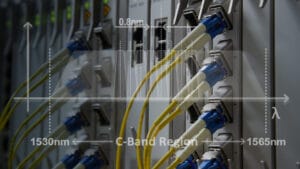
Each year, more and more people around the world are terminating their traditional wired service contracts, or “cutting the cord.” In fact, for every minute of 2018, six more people cut the cord! However, surveys have shown that people are watching more television than ever, but they’re doing so increasingly via web-based streaming websites and devices. But what does this mean for your network? In this article, we look at some of the reasons this trend shows no signs of slowing down and its implications for network operators.
Why Cut the Cord?
The unparalleled choice and flexibility offered by today’s streaming content providers make web-based streaming an enticing alternative to traditional television viewing. The variety and quality of on-demand streamable content has proliferated over the last half-decade and shows no signs of slowing down. With major American sport broadcast contracts set to expire over the next few years, it is increasingly likely streaming content providers will be in the bidding.
Research has also indicated additional psychological benefits to cutting the cord. In addition to the aforementioned freedom of choice, customers feel like they’re saving money by forgoing expensive traditional cable packages. However, unlike many perceived “luxury” goods, this trend has sustained through the good and bad sides of economic cycles.
Furthermore, the advent of widespread deployments of 5G wireless over the coming years will make cord-cutting even easier. Theexponential increase in bandwidththat 5G is expected to provide would effectively turn wireless carriers into broadband providers, increasing competition for service delivery and often making a traditional connection feel redundant.
How Much Bandwidth Is Enough?
The amount of bandwidth required to stream HD video reliably varies among content providers, most recommend a connection of between 3 and 6Mb/s per stream; 4K video requires 10 to 25Mb/s. A legacy GPON FTTx deployment with a downstream data rate of 2.5G will provide end users with 39M (with a 64-way split) or 78M (with a 32-way split). While this should provide ample bandwidth to average users today, it will prove insufficient for today’s heavy users (e.g., families streaming video on multiple devices). This constraint will only worsen as ultra-HD 8K video becomes increasingly common. Therefore, network operators should plan ahead by upgrading their FTTx deployments to 10G (XGS-PON, for example).
Want to learn more about how to add bandwidth to your network?Contact us today.

